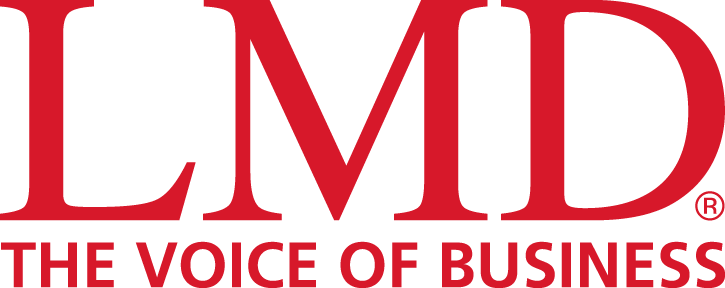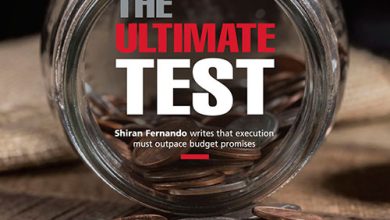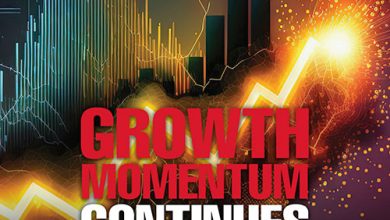THE GOLD RUSH

HEDGE AGAINST INSTABILITY
Samantha Amerasinghe wonders if gold prices will soar even higher in 2025
The demand for gold, which is traditionally a hedge against instability, has reached record highs in recent times. It has outshone other major asset classes since President Donald Trump’s inauguration, as fears of a global trade war and a potential slowdown in global growth continue to fuel demand.
Three fundamental factors have driven the gold price rally since last year – viz. geopolitical uncertainty, central bank purchases and interest rates. Interest rate cuts by the US Federal Reserve (the Fed), concerns about growing government debt levels under Trump, and conflicts in the Middle East and Ukraine are expected to raise prices in 2025.
At the end of February, the ‘safe haven metal’ had surged more than seven percent since the beginning of the year.
The recent gold rally has been supercharged by a growing stockpile in New York. It increased 116 percent since the November elections as traders and banks rush to move gold from London to the United States. This led to a shortage of bullion in London, as traders amassed a US$ 82 billion stockpile in New York over fears of Trump administration tariffs.
Geopolitical uncertainty and the threat of a global trade war have led to concerns that economic growth will falter and inflation is likely to rise – factors that typically benefit gold. Previous examples of gold surging in a similar fashion were during the COVID-19 pandemic and global financial crisis.
A structural shift in demand due to strong buying by central banks has caused gold to rally this year. Central banks in emerging markets in particular have been diversifying away from the dollar since the US imposed sanctions on Russia, following its 2022 invasion of Ukraine.
The dollar has in fact slipped 2.4 percent this year against a basket of other currencies and fallen significantly since Trump’s inauguration. Central banks in countries such as China, Russia, India and Türkiye have increased their gold purchases substantially.
This reflects a growing mistrust in the dollar, which is a trend that’s fuelled by these countries accelerating their efforts towards dedollarisation. Retail buying has been the other key driver of gold demand.
China’s central bank has increased its gold holdings and according to the World Gold Council, the inflow into bullion backed exchange-traded funds (ETFs) has been strong (around US$ 3 billion in January, following a notable weakness in prior months).
European gold funds have also seen their highest inflow (over three billion dollars) in almost three years due to concerns that US tariffs will be detrimental; and both have good reason to diversify reserves away from the greenback.
The actions of the Fed and direction of the dollar will continue to be important drivers of gold. Falling US interest rates contributed to gold’s rally in the second half of 2024, and the pace of further cuts could be crucial to the outlook for gold. However, the dollar is expected to remain flat or only slightly weaken so the latter will have only a minimal impact.
Gold prices pulled back slightly after the Fed reduced rates in December and indicated that borrowing costs will fall more slowly than previously expected in 2025. Gold typically benefits from lower interest rates because the opportunity cost of holding it is less.
Nevertheless, the US Federal Reserve is worried about the growing risk to the outlook for inflation due to the Trump administration’s economic policies.
In January, the Fed indicated that it needed to see “further progress on inflation” before any new interest rate cuts could be announced, as the US central bank had kept monetary policy steady in the face of high uncertainty over the outlook.
It doesn’t appear to be in any hurry to cut rates, given the uncertainty about the direction in which the economy may be headed and fears that Trump’s tariffs may fuel inflation.
Analysts are predicting that the Fed will probably cut the benchmark interest rate only once this year with the possibility that there could be none. The rate cut would be supportive of gold but that tailwind will likely subside in the second half of 2025.
Fed officials have signalled that monetary policy was not on any preset course with a range of possibilities ahead. Monetary policy could go either way and the Fed will hold the policy rate at a restricted level if the economy remains strong and inflation stays elevated.
Policy would be eased if labour market conditions deteriorate, economic activity falters or inflation returns to two percent sooner than anticipated. The US Fed Funds Rate is currently at a range of between 4.25 and 4.5 percent.
Until US tariff policy becomes clearer over the next few months, it will be difficult to predict the outlook for gold prices – and it remains to be seen whether 2025 will be another glittering year for the precious metal.







